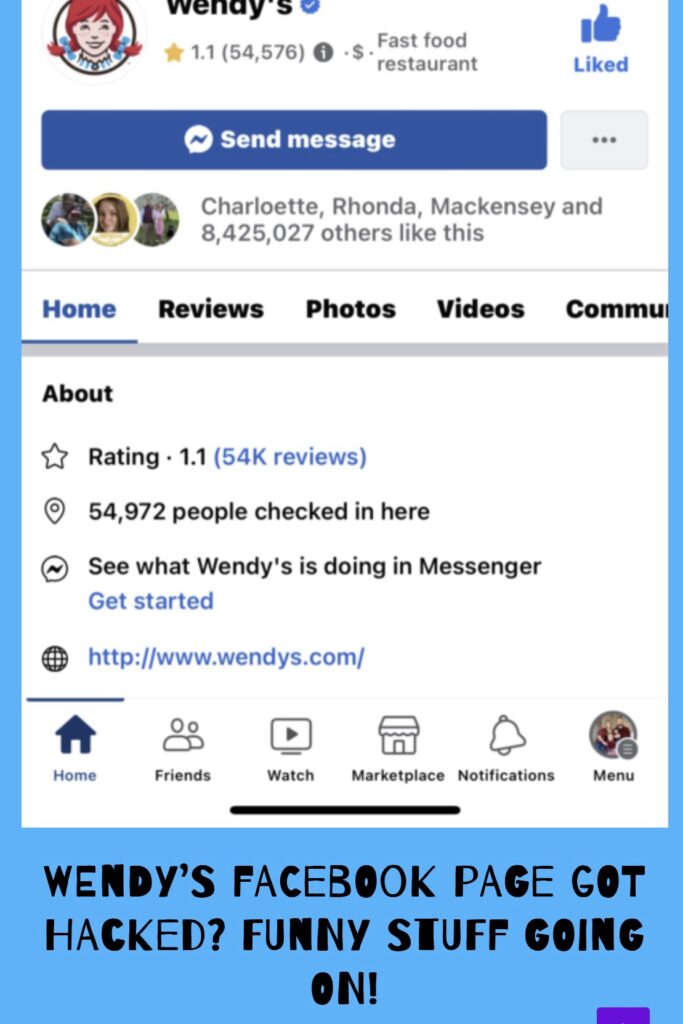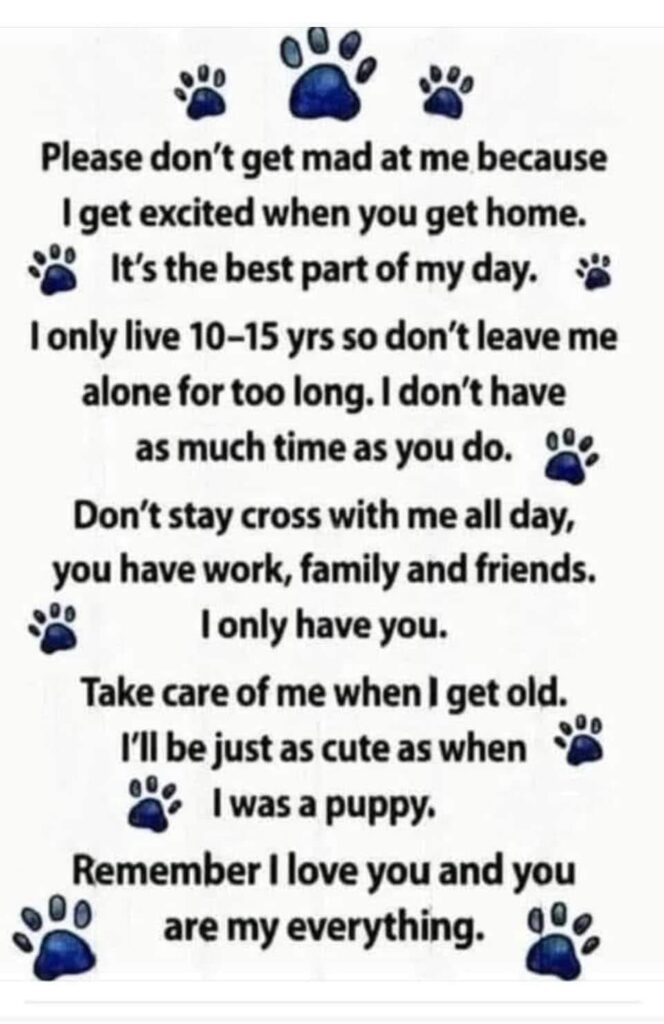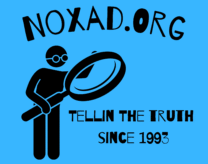
Recognizing the Signs Your Dog Might Dislike You
As a lifelong dog lover and trainer, I’ve always believed that our furry friends are some of the most loyal and loving companions we can have. But even the strongest bonds can sometimes show signs of strain. Have you ever felt like your dog is avoiding you, acting out, or just doesn’t seem as affectionate as before? If so, you might be wondering, “Does my dog dislike me?”
Understanding the signs your dog might dislike you is crucial for maintaining a healthy relationship with your pet. Dogs, like humans, have their ways of communicating discomfort, stress, or even fear. When these signals are misunderstood or ignored, it can lead to a breakdown in the bond between you and your dog. In this article, I’ll share some insights from my years of experience working with dogs, helping you recognize the subtle (and not-so-subtle) signs that your dog might be unhappy—and more importantly, what you can do about it.
60 years ago today, we might have been less attuned to these nuances in our pets’ behavior, but today, we have a wealth of knowledge at our fingertips. By being observant and understanding what your dog is trying to tell you, you can address these issues head-on and strengthen the bond you share.

Understanding Why Your Dog’s Behavior Might Change
It’s not uncommon for dog owners to suddenly notice a shift in their pet’s behavior—perhaps your dog has become less affectionate, more withdrawn, or even started displaying signs of aggression. Recognizing the signs your dog might dislike you is the first step towards understanding and improving your relationship. But what causes these changes in behavior? Let’s explore some of the common reasons why your dog might be acting differently.
Common Signs of Dislike in Dogs
When a dog starts to act out or withdraw, it can be easy to misinterpret these behaviors as simple stubbornness or moodiness. However, dogs communicate their discomfort and dissatisfaction in specific ways. Here are some signs that your dog might be unhappy or even starting to dislike you:
- Avoiding Eye Contact: Dogs that are unhappy or uncomfortable often avoid making eye contact. If your dog suddenly starts looking away when you approach or speak to them, this could be a signal that they’re feeling uneasy or disconnected.
- Growling or Snapping: Aggression can sometimes be a response to fear or frustration. If your dog growls or snaps at you, it’s crucial to take this behavior seriously. It’s their way of telling you that something is wrong.
- Hiding or Isolating Themselves: A dog that frequently hides under furniture, avoids being in the same room as you, or seems to isolate themselves may be experiencing anxiety or stress. This withdrawal is often a key sign your dog might dislike you or at least is feeling uncomfortable in your presence.
- Ignoring Commands or Acting Out: If your dog suddenly starts ignoring commands they’ve previously followed or begins to act out, it might be a sign of underlying resentment or confusion. This behavior is often a result of inconsistency in training or changes in your routine that your dog is struggling to adjust to.
Understanding these behaviors is crucial, but it’s equally important to recognize that they don’t necessarily mean your dog actually “hates” you. More often than not, these are signs of underlying issues that need to be addressed to restore harmony in your relationship.
Miscommunication and Misunderstandings
Many of the behaviors that might seem like signs of dislike are often the result of simple miscommunication between you and your dog. Dogs rely heavily on body language and tone of voice to understand what we want from them, and if they’re confused, it can lead to frustration on both sides.
For example, inconsistent commands or unclear boundaries can leave your dog unsure of what you expect from them. This confusion can manifest as anxiety, which might be misinterpreted as dislike. Additionally, a lack of proper socialization or exposure to certain situations can cause your dog to react negatively, not because they dislike you, but because they’re overwhelmed or scared.
To better understand your dog’s emotions and improve communication, I recommend reading The Unspoken Love: What Your Pet Wants You to Know. This resource offers valuable insights into the emotional lives of pets and can help you connect more deeply with your dog.
The key to overcoming these challenges is patience and understanding. By paying close attention to your dog’s behavior and learning to interpret their signals accurately, you can work towards rebuilding trust and ensuring your dog feels safe and loved in your presence.

Reasons Your Dog Might Seem to Dislike You
If you’re noticing the signs your dog might dislike you, it’s important to understand the underlying reasons behind this change in behavior. Dogs are incredibly loyal and loving creatures, so when their behavior shifts, it often stems from something more complex than simple dislike. Let’s explore some of the most common reasons why your dog might seem to be distancing themselves from you.
Inconsistent Training and Boundaries
Dogs thrive on routine and consistency. When there’s a lack of clear boundaries or inconsistent training, it can lead to confusion and frustration for your pet. If you’ve recently changed your training methods or if you’re inconsistent with commands, your dog might start to act out or appear distant.
For example, if you sometimes allow your dog on the furniture but other times scold them for it, they may become confused about what’s expected of them. This inconsistency can cause anxiety, which might manifest as behaviors that seem like your dog is ignoring you or acting out of spite. It’s not that your dog dislikes you, but rather they’re unsure of the rules and how to please you.
To address this, make sure your training is clear and consistent. Establish routines and stick to them. Your dog will feel more secure knowing what’s expected, which can help reduce signs of discomfort or dislike.
For more on understanding why your dog behaves in certain ways, consider reading Why Does My Dog Lick Me? Exploring the Reasons Behind This Common Canine Behavior. This resource dives into other misunderstood behaviors and provides insights that might help you improve your relationship with your dog.
Lack of Physical or Mental Stimulation
Another common reason why your dog might seem to dislike you is a lack of physical or mental stimulation. Dogs, especially high-energy breeds, require regular exercise and activities to keep their minds and bodies engaged. Without enough stimulation, they can become bored, restless, and even resentful.
One of the clearest signs your dog might dislike you due to boredom is when they start to lose interest in activities they once loved or begin engaging in destructive behaviors like chewing furniture or digging in the yard. These are often cries for attention or a sign that your dog needs more engagement.
It’s important to ensure that your dog is getting enough exercise and mental challenges. Daily walks, playtime, and interactive toys can make a significant difference in your dog’s mood and behavior. If your dog seems bored or unhappy, try introducing new activities to their routine.
For ideas on how to keep your dog entertained, especially when outdoor activities aren’t an option, check out Indoor Adventures: Engaging Activities to Keep Your Pets Entertained and Active. Keeping your dog mentally stimulated can drastically reduce negative behaviors and help them feel happier and more connected to you.

How to Rebuild Trust and Improve Your Relationship
If you’ve recognized the signs your dog might dislike you, the good news is that it’s never too late to rebuild trust and strengthen your bond. Dogs are incredibly forgiving and eager to reconnect when given the right environment and care. Here are some strategies to help you re-establish a positive relationship with your dog.
Re-establishing Consistent Routines
One of the first steps in rebuilding trust with your dog is to reintroduce consistency into their daily life. Dogs feel secure when they know what to expect, and a regular routine provides them with a sense of stability. Start by setting consistent times for feeding, walks, play, and training sessions.
When you re-establish a routine, your dog will begin to trust that their needs will be met reliably, which can significantly reduce anxiety and stress. For example, if your dog knows that they will be walked at the same time each day, they will start to anticipate this activity and look forward to it, rather than feeling unsure or anxious about when they might get outside next.
Consistency also applies to the way you communicate with your dog. Use the same commands for specific actions and reinforce good behavior with positive reinforcement. Over time, your dog will understand what’s expected of them and will feel more comfortable and secure in your relationship.
Strengthening Your Bond with Positive Reinforcement
Positive reinforcement is a powerful tool in any dog owner’s arsenal. By rewarding your dog for good behavior, you encourage them to repeat those actions, which helps to strengthen your bond. This approach is especially important when you’re trying to overcome negative behaviors that may have developed due to stress or confusion.
When you notice signs your dog might dislike you, consider how you can use positive reinforcement to change their perception. For example, if your dog has been avoiding you, start by rewarding them for approaching you or for staying calm when you’re near. Use treats, praise, and affection as rewards to show them that being around you is a positive experience.
Consistency in this method is key—always reward good behavior promptly so your dog can make the connection between their actions and the positive outcome. Over time, you’ll likely see a shift in your dog’s behavior as they begin to associate you with positive experiences rather than stress or uncertainty.
Understanding and Adapting to Your Dog’s Needs
Every dog is unique, and understanding your dog’s specific needs is crucial for a happy relationship. Some dogs require more physical activity, while others need mental stimulation or more social interaction. By observing your dog’s behavior and learning what makes them happy, you can tailor your approach to meet their individual needs.
For instance, if your dog is showing signs of boredom or frustration, it might be time to introduce new activities or toys that challenge them mentally. On the other hand, if your dog seems anxious or overwhelmed, they might benefit from more quiet time or a safe space where they can retreat when they need a break.
Learning to read your dog’s body language and responses can go a long way in improving your relationship. Small changes in their routine, environment, or the way you interact with them can make a significant difference in how they perceive you. For a fun way to deepen your connection, consider expanding your communication with your dog by learning new cues or commands—this can be both educational and enjoyable for both of you. You might even find it interesting to explore The Word ‘Dog’ in Spanish as a lighthearted way to engage with your dog in a new way.

By being attentive to your dog’s needs and making the necessary adjustments, you can help alleviate any negative feelings they might have and rebuild a strong, trusting bond.
Addressing Persistent Behavior Issues
Even with the best intentions, there may be times when the signs your dog might dislike you persist despite your efforts to improve the relationship. When this happens, it’s important to take a closer look at the underlying issues and consider whether professional help might be necessary. Here’s how to recognize when you need extra support and what to look for as you work to mend your bond with your dog.
When to Seek Professional Help
If you’ve tried re-establishing routines, using positive reinforcement, and understanding your dog’s specific needs, but you’re still seeing behaviors that concern you, it might be time to consult a professional. A dog trainer or behaviorist can provide expert insight into your dog’s behavior and help identify issues that may not be immediately apparent.
For example, if your dog is showing aggression, excessive anxiety, or continues to avoid you despite your best efforts, these could be signs of deeper behavioral problems. A professional can help you develop a targeted plan to address these issues, often involving a combination of training techniques, environmental changes, and sometimes even medical intervention.
Seeking help isn’t a sign of failure—on the contrary, it shows your commitment to doing what’s best for your dog. By involving a professional, you’re taking a proactive step towards ensuring your dog’s well-being and restoring a positive relationship.
Recognizing the Signs of Improvement
As you work to address the signs your dog might dislike you, it’s important to celebrate small victories along the way. Positive changes in your dog’s behavior, even if they seem minor at first, are good indicators that your efforts are paying off.
Look for signs that your dog is becoming more relaxed and comfortable around you. This might include increased eye contact, more enthusiasm during playtime, or simply choosing to be near you more often. These behaviors suggest that your dog is starting to rebuild trust and feel more secure in your relationship.
It’s also helpful to keep track of your dog’s progress over time. Note any changes in behavior, both positive and negative, and adjust your approach as needed. Remember that rebuilding a relationship with your dog is a process, and it may take time to see significant improvements. Patience, consistency, and love are your best tools in helping your dog feel safe and happy once again.

In the end, recognizing the signs your dog might dislike you and taking steps to address them can lead to a stronger, more fulfilling bond with your furry friend. By being attentive to their needs and seeking help when necessary, you’re giving your dog the best chance at a happy and healthy life.
Fostering a Stronger Bond with Your Dog
Building a strong, trusting relationship with your dog is one of the most rewarding experiences as a pet owner. If you’ve noticed the signs your dog might dislike you, it’s important to remember that these behaviors are often a cry for help rather than genuine dislike. By understanding the root causes, whether they stem from inconsistent training, lack of stimulation, or even miscommunication, you can take meaningful steps to improve your bond.
Throughout this journey, it’s essential to be patient, consistent, and loving. Re-establishing routines, using positive reinforcement, and truly understanding your dog’s needs are key strategies for turning things around. And if you find that you need extra support, don’t hesitate to seek the help of a professional dog trainer or behaviorist—they can offer valuable guidance tailored to your dog’s unique situation.
As you work through these challenges, keep an eye out for signs of improvement. Celebrate the small victories, like your dog showing more affection, engaging in play, or simply being more comfortable in your presence. These are indicators that your efforts are making a difference and that your relationship with your dog is on the path to healing.

In the end, your dog’s behavior is a reflection of their emotional state, and by being a responsive and caring owner, you can ensure that your dog feels safe, loved, and happy. For those who want to keep their bond strong, consider something as simple as a reminder of your commitment to your pet—like the I’d Rather Be Home with My Dog SVG, a fun way to show your love for your furry friend.
Remember, the journey to improving your relationship with your dog is a marathon, not a sprint. But with dedication and understanding, you’ll soon see the results of your efforts in a happier, more content companion by your side.
As an Amazon Associate we earn from qualifying purchases through some links in our articles.
